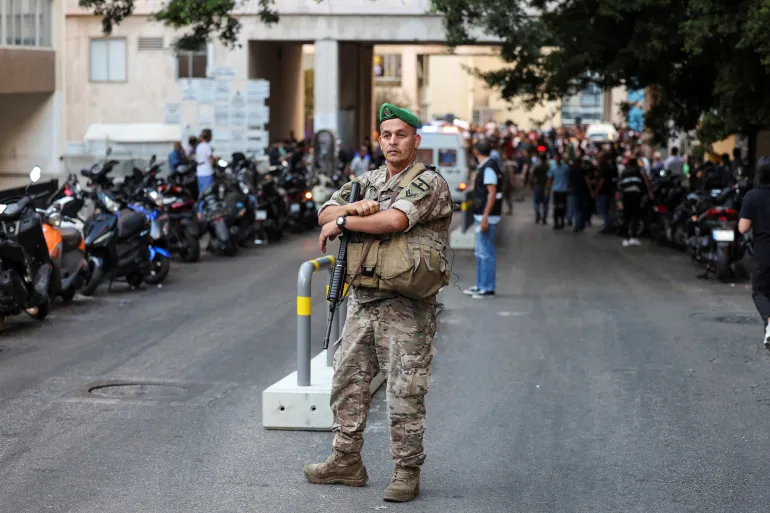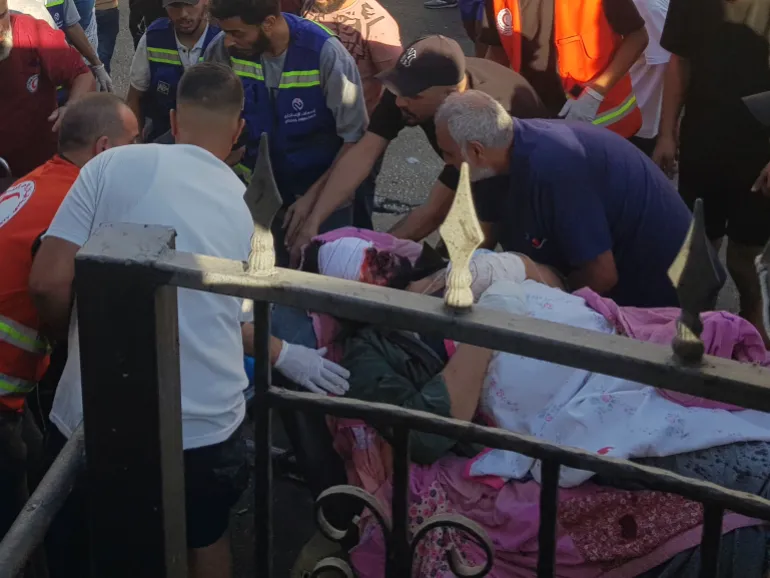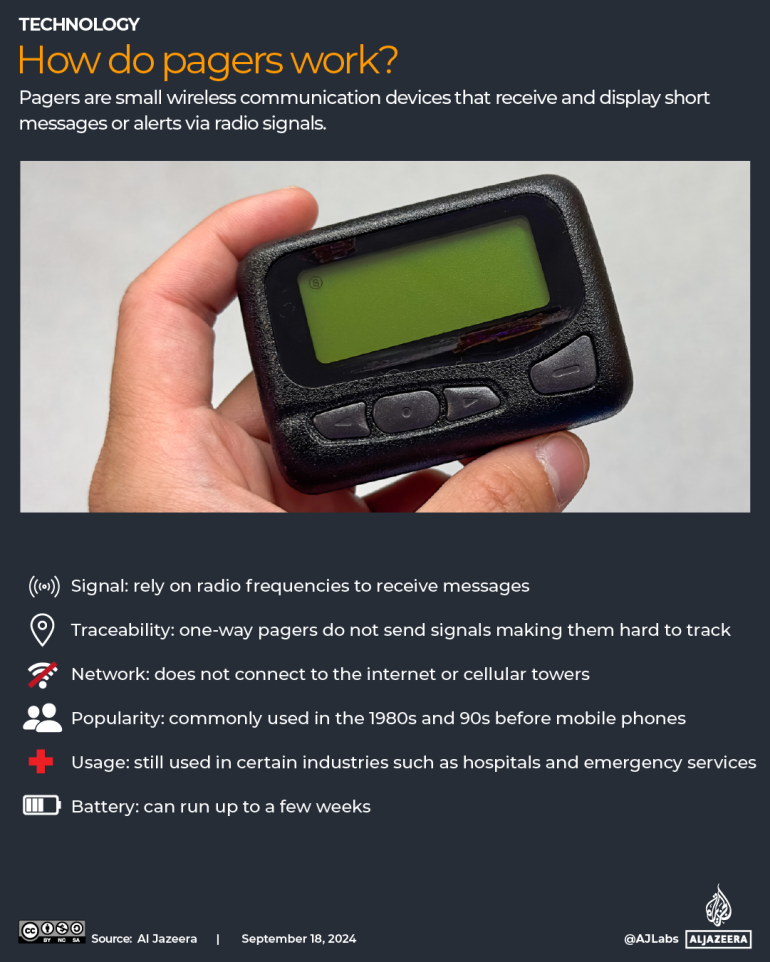How Did Hezbollah’s Pagers Explode in Lebanon? Explainer
MIDDLE EAST AND NORTH AFRICA, 23 Sep 2024
Al Jazeera Staff - TRANSCEND Media Service

A soldier on duty near American University of Beirut Medical Center after 2,750 people, including Hezbollah fighters and medics, were wounded when the pagers they use to communicate exploded simultaneously across Lebanon on 17 Sep 2024.
[Mohamed Azakir/Reuters]
Localised explosions across Lebanon open a new chapter in one of the region’s most established conflicts.
17 Sep 2024 – Hundreds of pagers belonging to the Lebanese armed group Hezbollah have simultaneously exploded across Lebanon.
At the time of publishing, at least nine people have been killed and 2,750 wounded, according to security services and the Lebanese health minister.
What’s a pager? Why use them?
Pagers are small communication devices used commonly before mobile phones became widespread.
The devices display a short text message for the user, relayed by telephone through a central operator.
Unlike mobile phones, pagers work on radio waves, the operator sending a message by radio frequency – rather than the internet – unique to the recipient’s device.
It is thought that the basic technology used in pagers as well as their reliance upon physical hardware means they are harder to monitor, making them popular with groups such as Hezbollah where both mobility and security are paramount.
What happened?
The series of explosions began at about 15:30 local time and lasted for around an hour.
Casualty numbers are still being confirmed.
One eight-year-old girl has been confirmed among the dead.
Mohammad Mahdi Ammar, the son of Hezbollah MP Ali Ammar, has also been reported killed.
Hezbollah confirmed that two of its fighters had been killed.
Lebanese Health Minister Firass Abiad told Al Jazeera: “About 2,750 people were injured, … more than 200 of them critically” with injuries mostly reported to the face, hands and stomach.
Iran’s ambassador to Lebanon, Mojtaba Amani, was also injured in the explosions.

Lebanese Civil Defense first-responders carry a man who was wounded when his handheld pager exploded in the southern port city of Sidon on 17 Sep 2024.
[AP Photo]
TO CONTINUE READING Go to Original – aljazeera.com
Tags: Hezbollah, IDF, Israel, Japan, Lebanon, Middle East, Palestine, State Terrorism
DISCLAIMER: The statements, views and opinions expressed in pieces republished here are solely those of the authors and do not necessarily represent those of TMS. In accordance with title 17 U.S.C. section 107, this material is distributed without profit to those who have expressed a prior interest in receiving the included information for research and educational purposes. TMS has no affiliation whatsoever with the originator of this article nor is TMS endorsed or sponsored by the originator. “GO TO ORIGINAL” links are provided as a convenience to our readers and allow for verification of authenticity. However, as originating pages are often updated by their originating host sites, the versions posted may not match the versions our readers view when clicking the “GO TO ORIGINAL” links. This site contains copyrighted material the use of which has not always been specifically authorized by the copyright owner. We are making such material available in our efforts to advance understanding of environmental, political, human rights, economic, democracy, scientific, and social justice issues, etc. We believe this constitutes a ‘fair use’ of any such copyrighted material as provided for in section 107 of the US Copyright Law. In accordance with Title 17 U.S.C. Section 107, the material on this site is distributed without profit to those who have expressed a prior interest in receiving the included information for research and educational purposes. For more information go to: http://www.law.cornell.edu/uscode/17/107.shtml. If you wish to use copyrighted material from this site for purposes of your own that go beyond ‘fair use’, you must obtain permission from the copyright owner.
Read more
Click here to go to the current weekly digest or pick another article:
MIDDLE EAST AND NORTH AFRICA:
